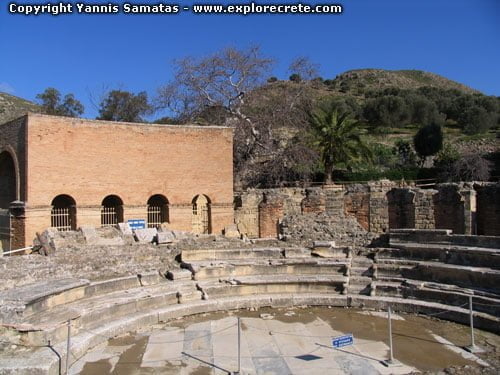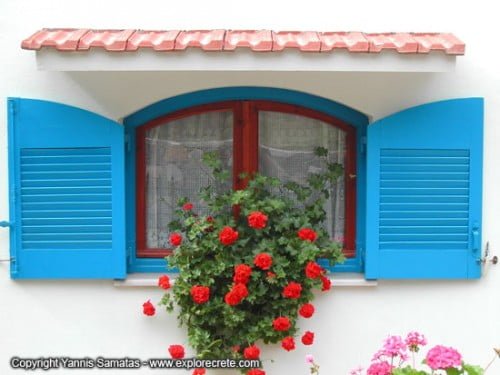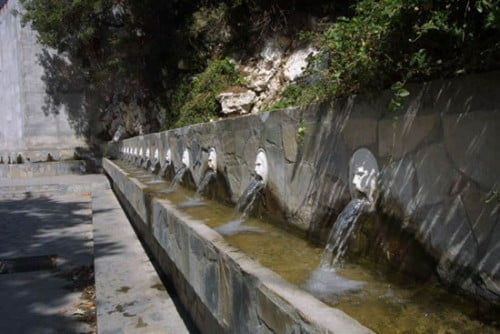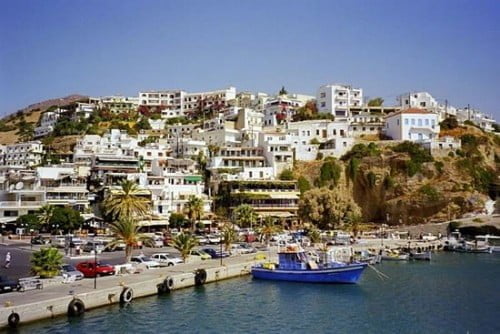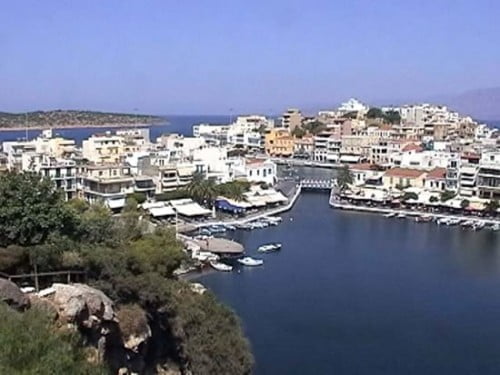Myrtos Pictures
Pictures of Myrtos beach and town
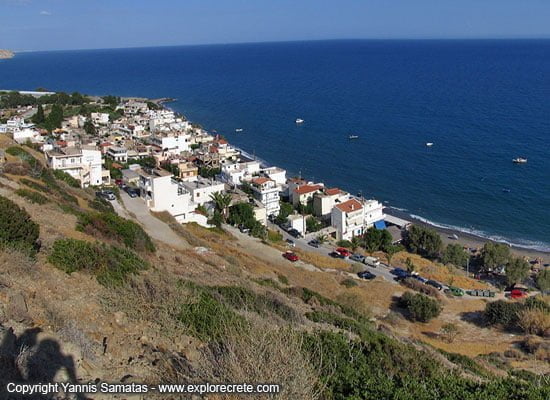
Myrtos seen from above 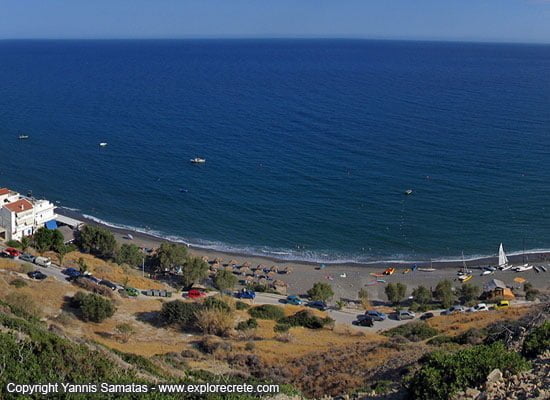
The large beach of Myrtos starts in the village and stretches west. 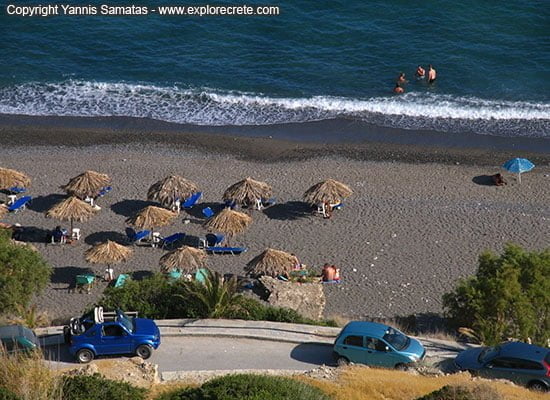
The beach at Myrtos is a sandy beach with grey sand. There are only a few, unintrusive umbrellas. 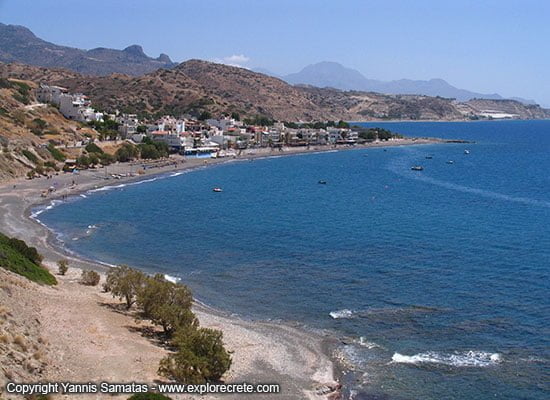
Myrtos and its beach seen from the west. 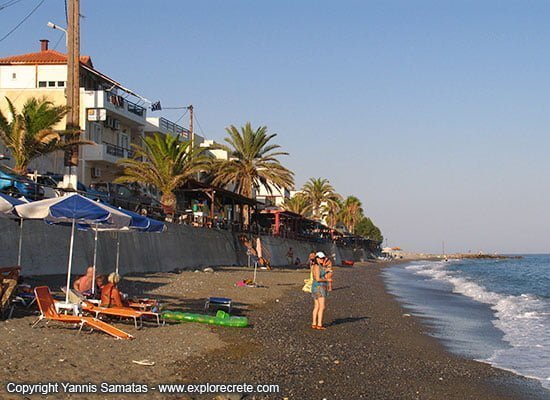
The beach right under the tavernas at Myrtos. The beach is not as wide here as it is further to the west, but it’s clean and not too crowded, just the place for a quick swim. The umbrellas are free for café and restaurant customers. 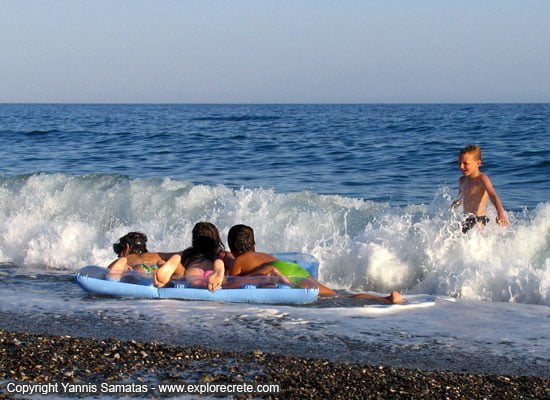
Children playing with the waves on the beach. Small children should not swim unsupervised, as the sea suddenly deepens. 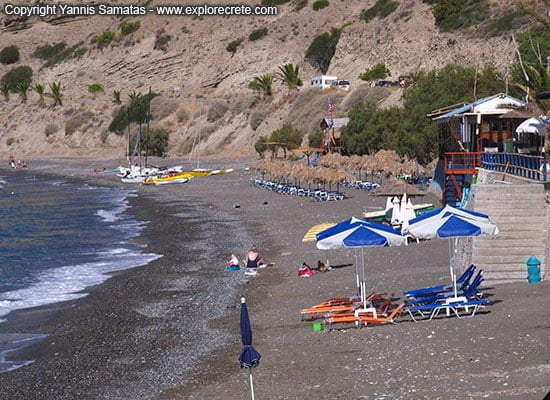
Another picture of the large west beach with its grey sand. Myrtos has the great advantage of being unaffected by northerly winds in the summer, unlike other places. 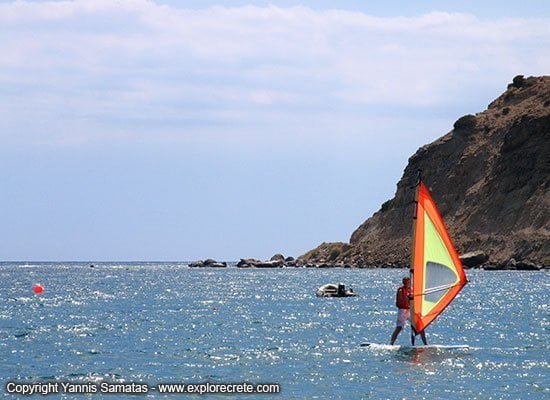
On the west beach you can hire canoes or windsurfing boards. 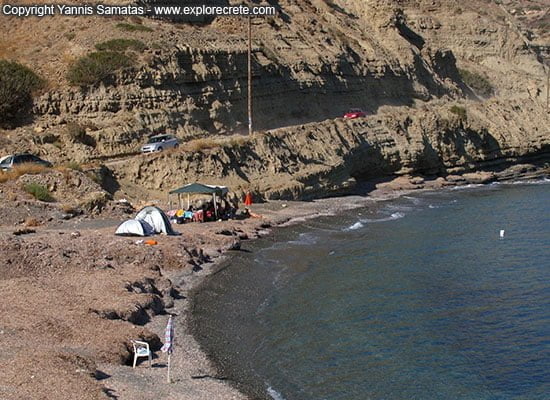
If you continue past Myrtos on the road to Tertsa, you will find small beaches suitable for camping. 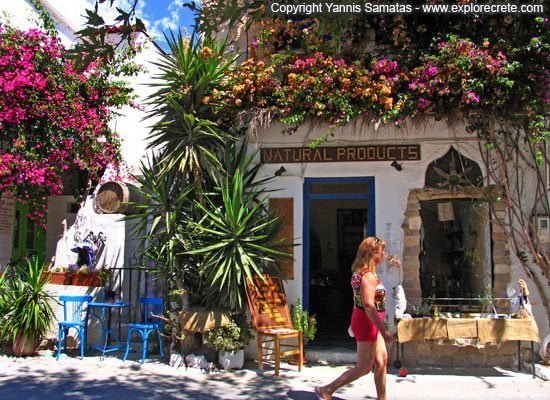
You will discover the true beauty of Myrtos on your first walk through the narrow village streets. 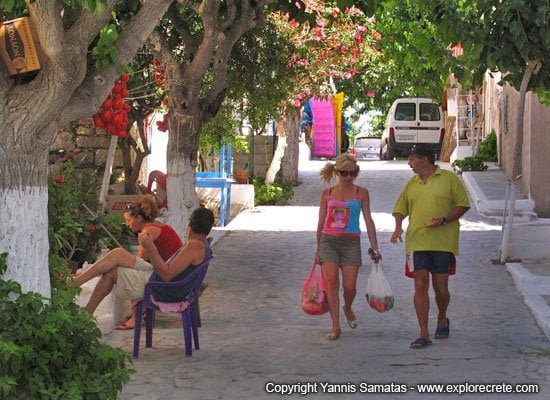
Myrtos is one of the most picturesque villages in Crete, with quiet, narrow streets full of flowers and trees. 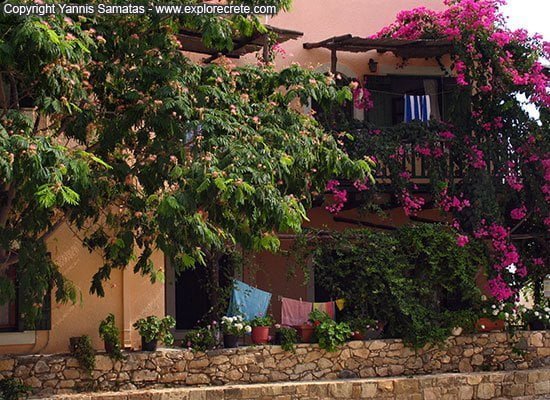
These apartments in Myrtos are set in a sea of green. 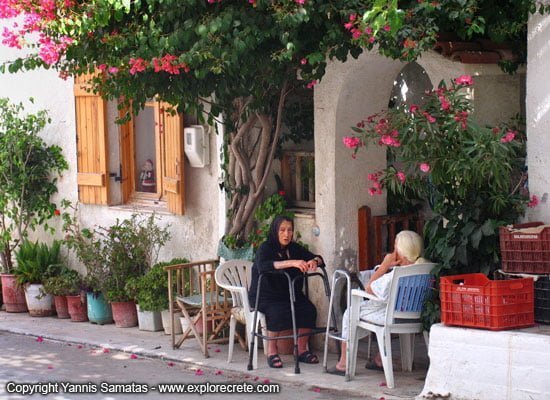
Two elderly ladies enjoying a chat in front of a house with pots full of flowers and aromatic herbs. 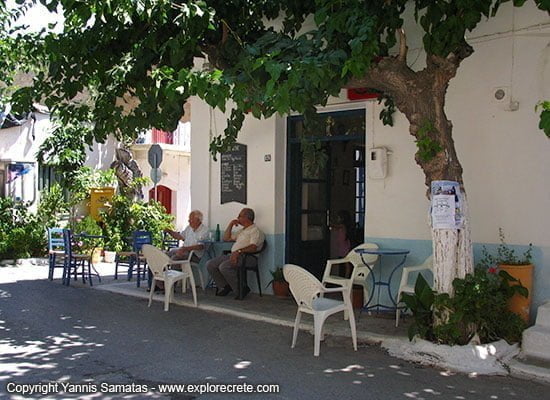
A pretty traditional café in the centre of Myrtos, where the dense foliage of a mulberry tree offers customers both shade and coolth. 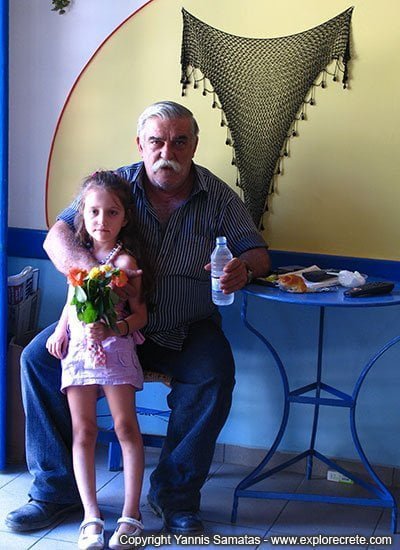
Mr Nikos, owner of the “Ermioni” café, with his granddaughter. He is also the owner of the only petrol station in Myrtos. Originally from Chania, he has fallen in love with Myrtos and lives here with his family. 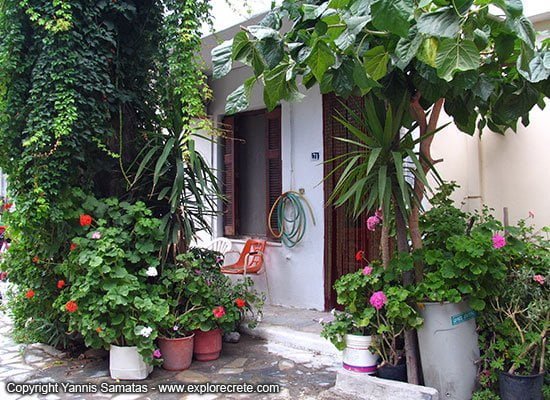
Another house with eye-catching plants and flowers. 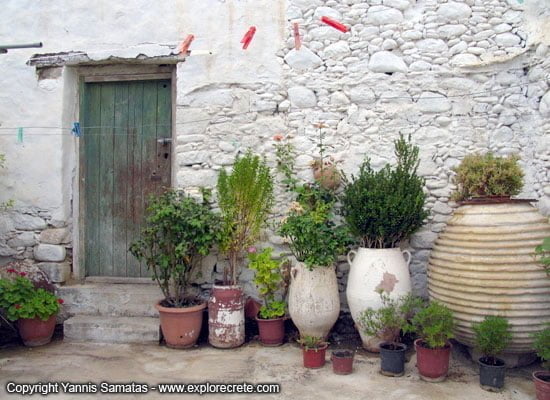
Pots and jars full of herbs in the courtyard of a traditional Cretan house. 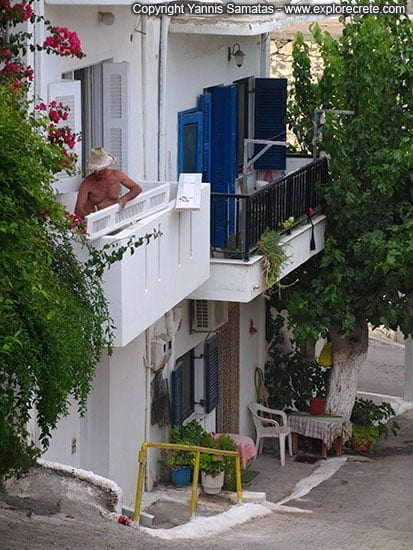
White and blue are common house colours in Myrtos, lending this pretty village an island touch. 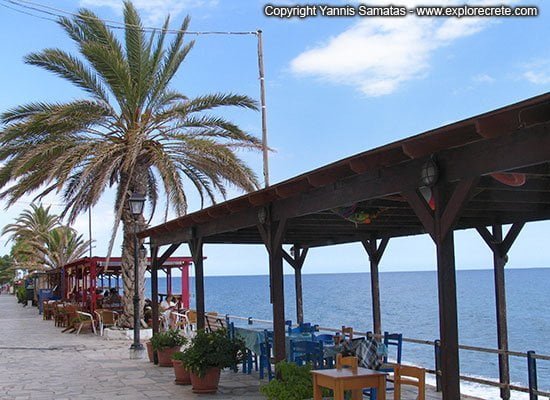
All the village streets lead to the coast road with its cafeterias and tavernas. 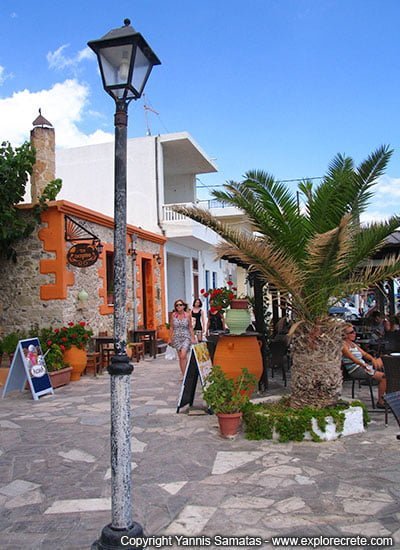
The coast road is pedestrianised and you can stroll around morning and night without having to step aside for cars. 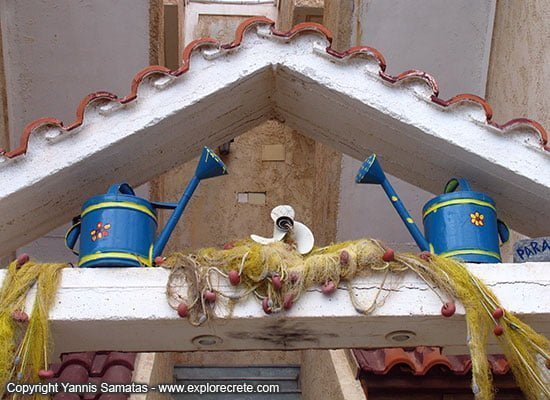
A seafront taverna whose owner has thought up an imaginative way to advertise his seafood dishes. 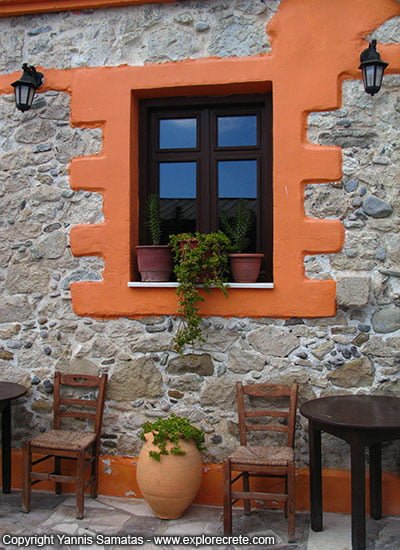
A café-bar offering a pleasant atmosphere in which modern and traditional elements are combined. The inhabitants of Myrtos are known for their good taste, unfortunately not a widespread feature in Crete. 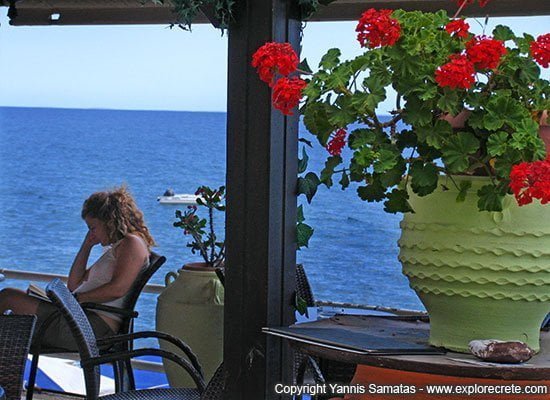
Deep in a good book next to the blue sea of Myrtos. 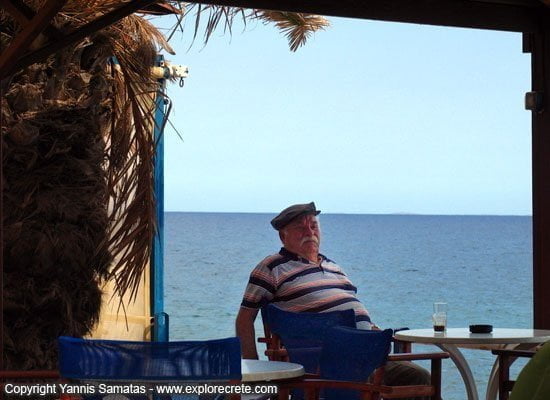
It’s not only tourists who enjoy the view of the blue sea and beachfront shops; the locals also take to opportunity to relax. 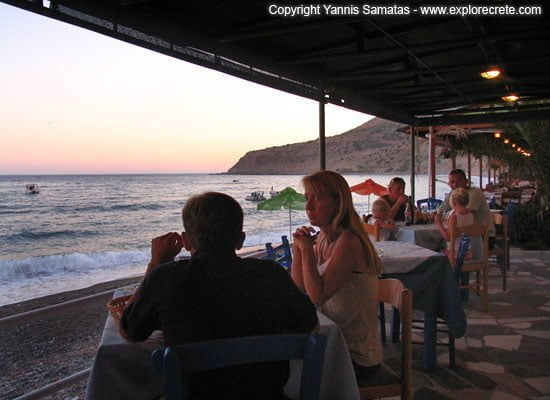
Admiring the sunset from a beachfront taverna in Myrtos. 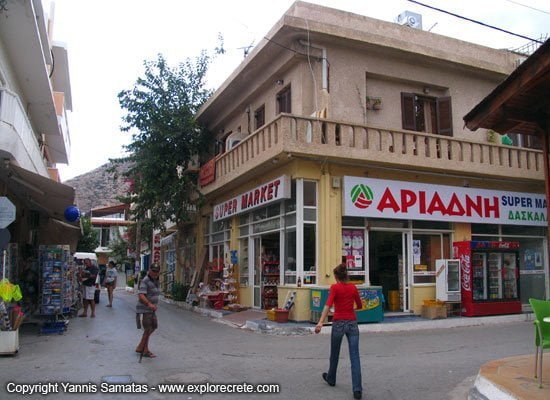
In Myrtos you’ll find the basic requirements for your holidays, including a mini-market in the village centre. 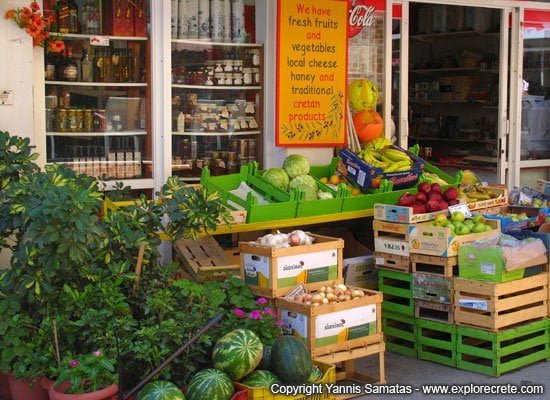
There’s also a grocer’s shop with fresh fruit and vegetables. 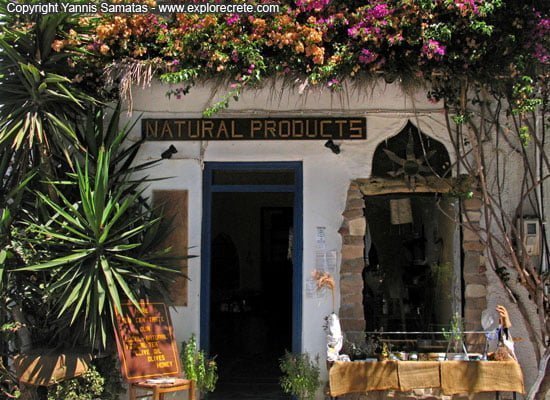
A shop selling natural Cretan products. 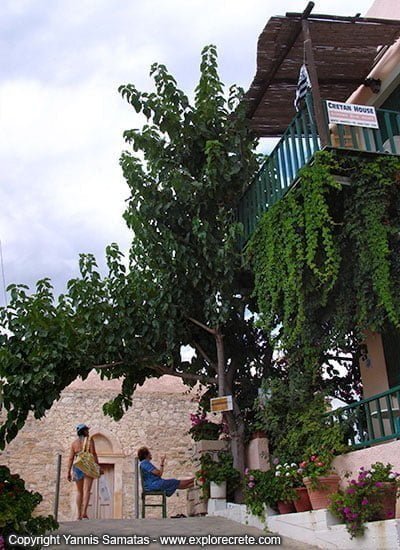
Climbing the steps up to the church of Agios Antonios and the neighbouring small museum, we are struck once more by the flowers and greenery decorating the houses of Myrtos. The building on the right is the apartments for rent owned by Mrs Eleni, who has created a green oasis in the heart of the village. 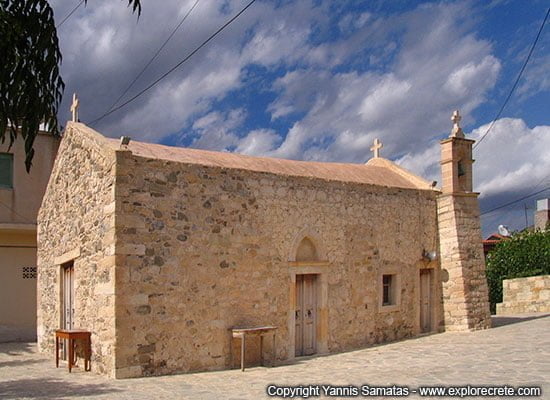
The church of Agios Antonios in the centre of the village. Building work began in 1853, was interrupted for unknown reasons and continued in 1890. In 1952 a small extension was added and the church was restored, as it was again in 1991. 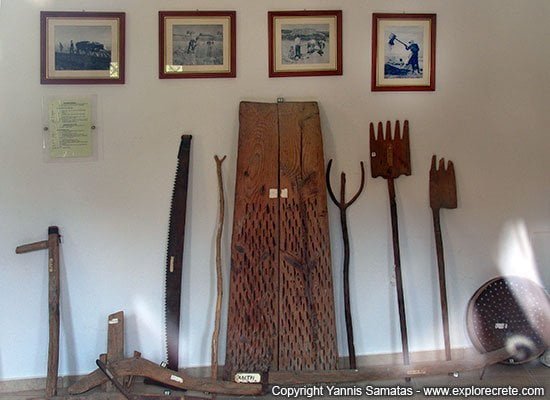
Next to Agios Antonios is the Myrtos Archaeological and Folk Museum. Here you can admire objects of everyday Cretan life in centuries past. 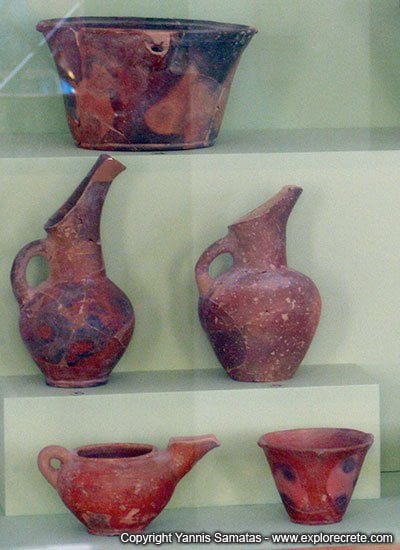
In the small museum of Myrtos you can also admire pottery found in the Minoan settlements of Fournou Korifi and Pirgos. 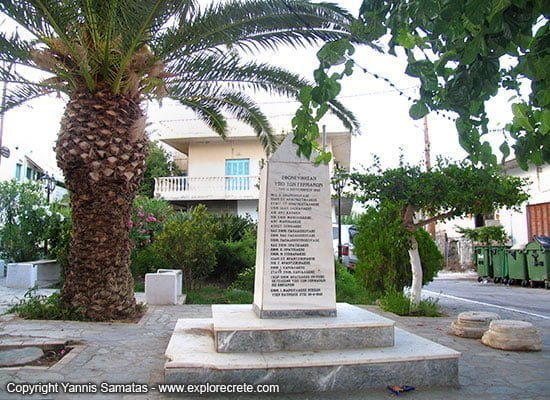
A small square with a war memorial dedicated to the inhabitants of Myrtos executed by the German army of occupation on 15 September 1943. 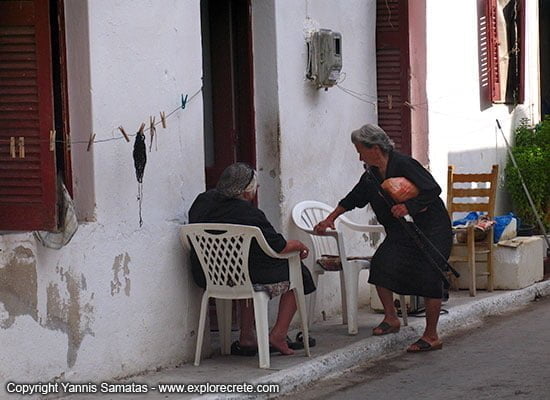
Walking through the streets of Myrtos you notice that most of the inhabitants are of an advanced age, as many young people have left the village for the towns. However, Myrtos is by no means a village in decline. 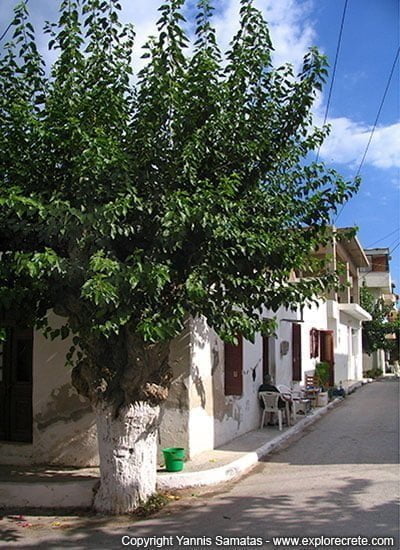
In every alleyway you’ll see at least one mulberry tree, the Cretans’ favourite tree, offering rich shade in summer and letting the sun through to warm their houses in winter. Who said bioclimatics is something new? 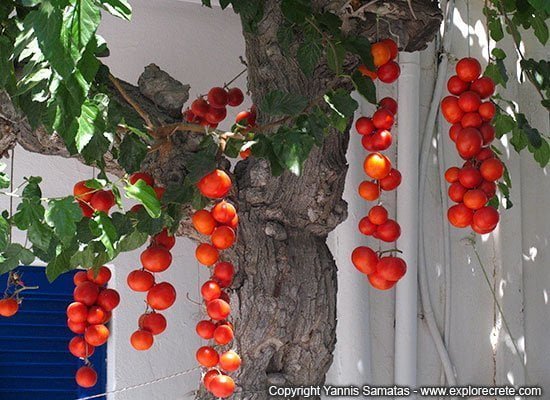
A picture you will see nowhere else in Crete: tomatoes are preserved by being hung from the trees, without being sundried. 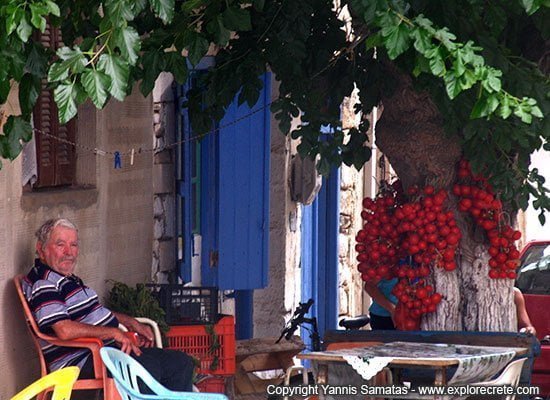
An elderly man enjoying the dense shade of a mulberry tree whose trunk is garlanded with bunches of bright red tomatoes, in front of a house with blue shutters. A typical image of Myrtos which you are unlikely to find anywhere else in Crete. 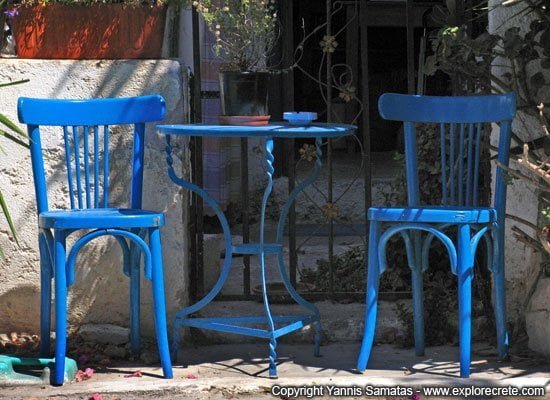
Blue chairs and table. Blue is used in many houses in Myrtos. 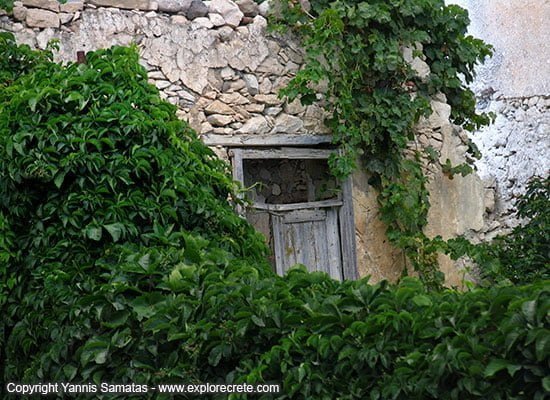
An old house choked in greenery. There are few ruined houses in Myrtos, showing that the village is growing. The main sources of income are farming and tourism, although the latter is not favoured by the distance from the ports and airports of Crete. But this helps the village preserve its beauty, rather than being turned into yet another faceless tourist resort like those of northern Crete. 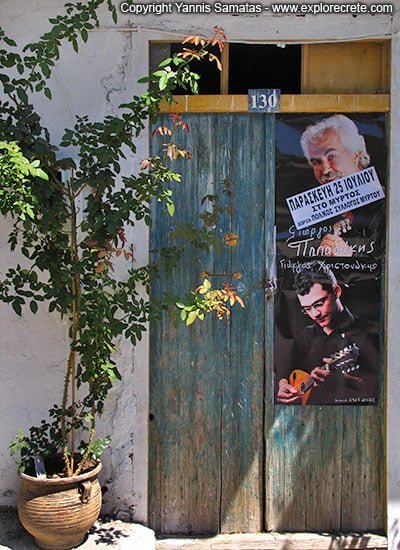
Posters advertising Cretan music and summer cultural events. Many events and concerts are also held in Ierapetra, just 15 kilometres from Myrtos. 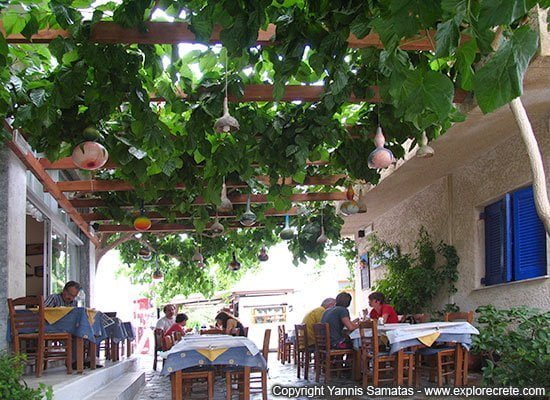
A taverna in Myrtos shaded by a vine. Note the gourds, or “tsouki” as they are known in Crete, and see the next photograph. 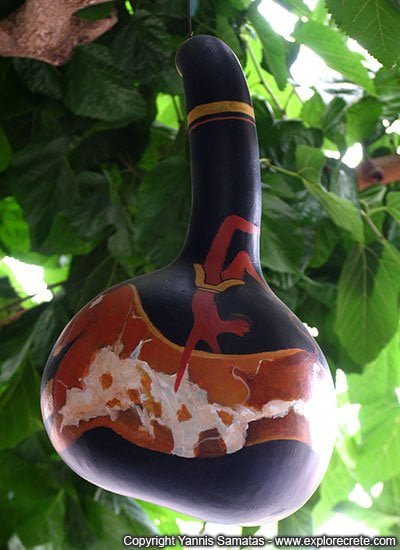
This gourd has been painted by a German artist living in Myrtos, depicting the famous Minoan bull-vaulting. 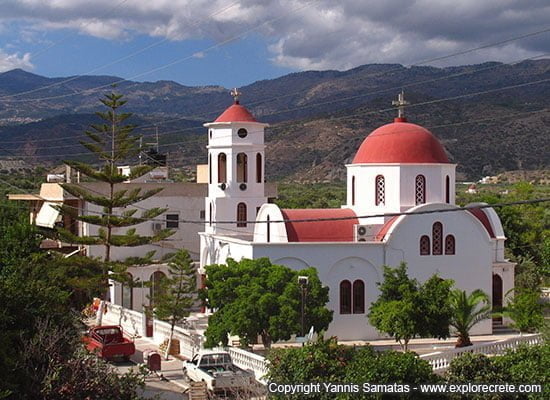
Agiοi Anargyri, the main church of Myrtos. 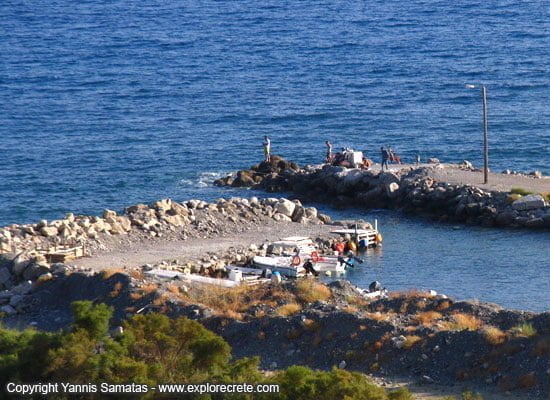
The tiny harbour at Myrtos offers limited shelter for local fishing boats. 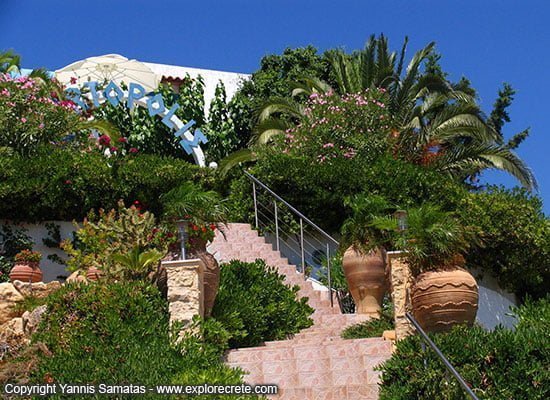
Rooms for rent on a hilltop above Myrtos. Another oasis of greenery to enchant visitors. 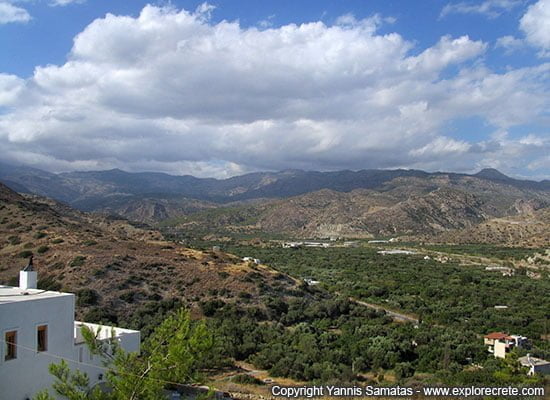
From here we have an uninterrupted view of the fertile valley of the River Kryos, which runs into the sea east of Myrtos, next to the tiny harbour. 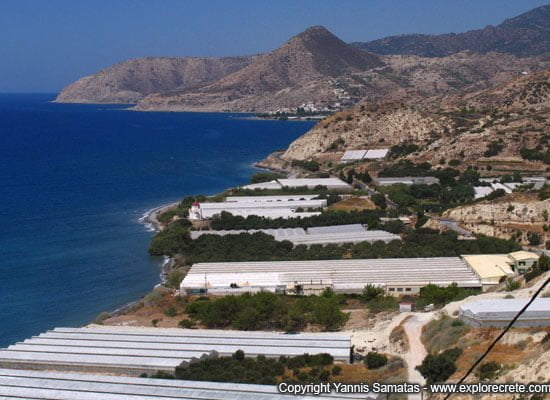
Leaving Myrtos and driving to Ierapetra we see lots of greenhouses with early greens, the basic source of local income. 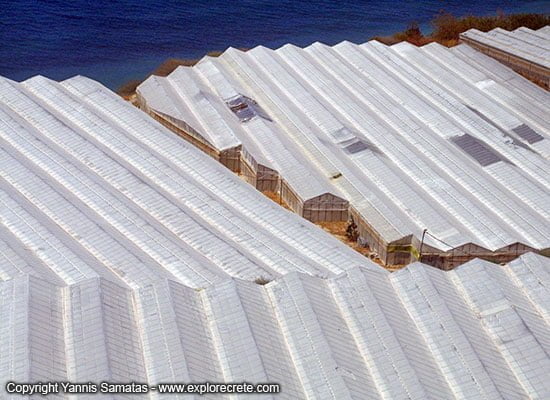
Thousands of hectares of land are covered by the white plastic of greenhouses. The sight may not be magical, but let’s not forget that these form the income of thousands of families in the Ierapetra area, the town where the first greenhouses were introduced to Crete. 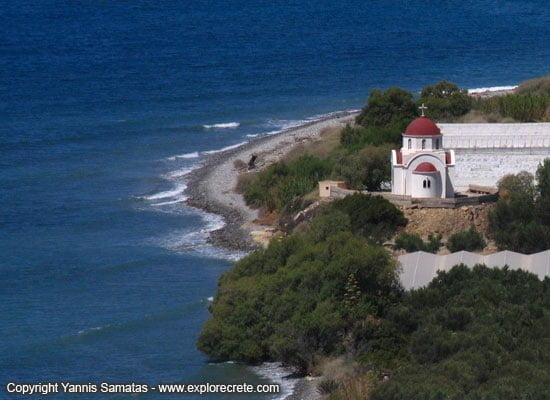
A small church among the greenhouses in the village of Neos Myrtos is visible from afar thanks to its deep red dome, contrasting beautifully with the green tamarisks and deep blue sea. Here you can see part of the pebble beach east of Myrtos. 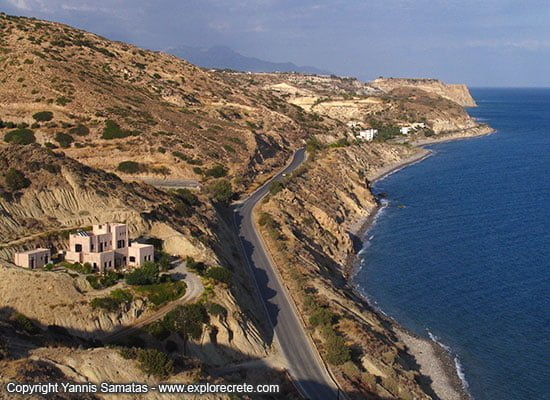
The scenery east of Myrtos is the typical southern Cretan landscape, where only shrubs and bushes can survive the long, dry summers. 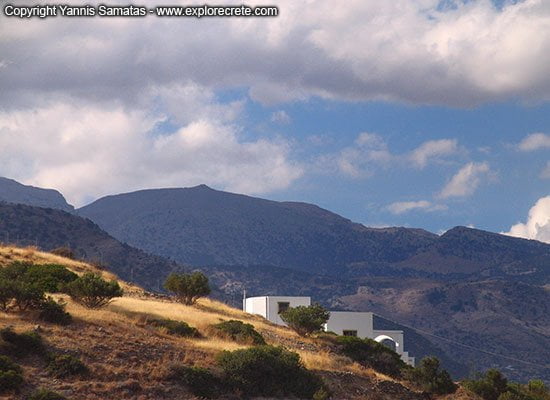
A blue sky with cotton-wool clouds, ash-grey mountains, golden dried grasses, dark-green olive trees and a white house nestling on a hillside make up the enchanting Cretan landscape. 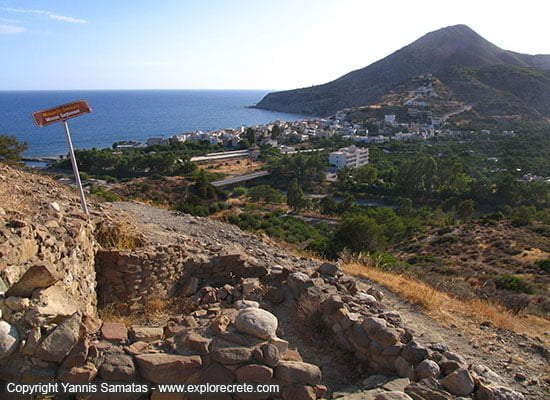
At the east end of Myrtos is the Pirgos archaeological site, set on a low hill with a panoramic view. 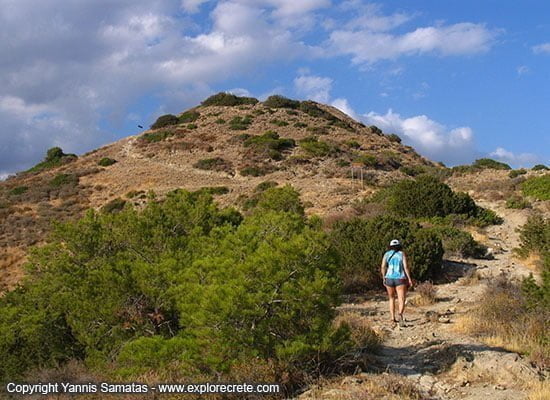
An easy path leads to the Minoan settlement of Pirgos. It’s best to climb here late in the afternoon, when the sun’s rays are no longer hot and the gentle light casts long shadows, bringing the landscape to life. 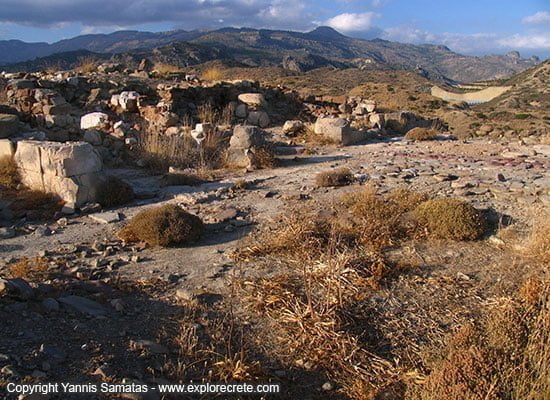
A Minoan villa, the most important building of the Minoan settlement of Pirgos. You can make out the south facade, behind a paved courtyard with a cistern below it. The hilltop building surveys all the surrounding area, the sea and the shore. 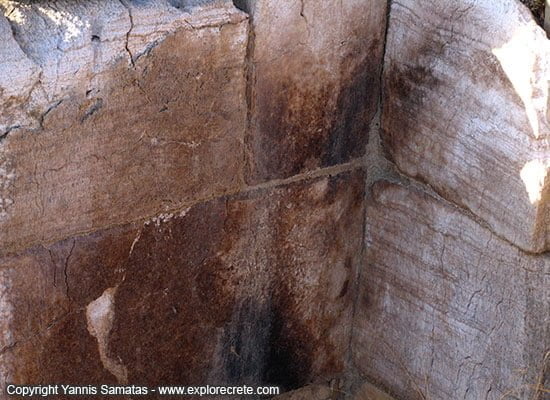
The walls of this building are faced with alabaster, with visible traces of fire. 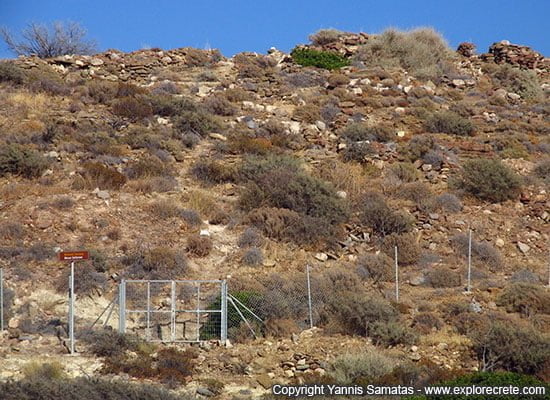
The second Minoan settlement in the area is known as “Fournou Korifi”, 3.5 km east of Myrtos. This settlement dates from the Early Minoan period, and the finds from here provide valuable evidence of life in Early Bronze Age Crete. Unfortunately the site is fenced off and entry is prohibited. 
Night has almost fallen in Myrtos and the sky is painted in the rosy colours of sunset. 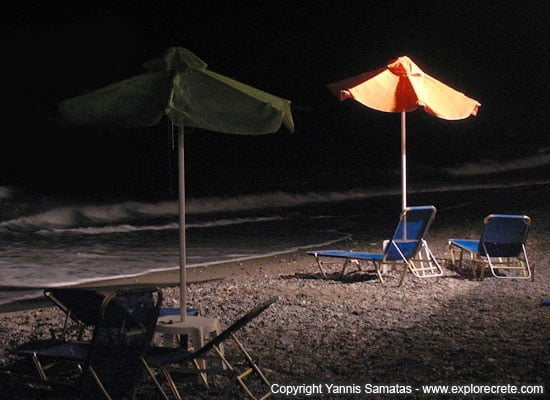
Night needs good company and good wine. You provide the company, and Myrtos will provide a never-ending flow of wine for you to enjoy in the seafront tavernas, listening to the sough of the waves on the shore.
- Pirgos and Fournou Korifi, two Minoan settlements near Myrtos
- Myrtos, a picturesque seaside village in southeast Crete
© explorecrete.com All Rights Reserved. Reproduction or copying without permission is prohibited.

